Running is a fun activity enjoyed by millions of people worldwide. It is a great way to stay fit, relieve stress, and improve overall health. As a self-confessed running addict, I live for the joy and satisfaction that comes with completing a run, whether it’s a short awe run around the neighborhood or a challenge ultra.
However, we all know that feeling when motivation escapes us.
It could be driven by a long break. Returning after injury. Putting on weight. Or over-doing it.
It could hit for a day. A week. Or longer.
When running is no longer fun, it can also be difficult to complete longer distances, properly warm up and down, or even take that first step at all.
In this article we’ll explore how to avoid getting to that point, and ways to make running fun again if you do.
Key Takeaways – How to Make Running Fun Again
- There are many routes into running – for physical fitness, mental clarity or a new hobby
- You’re not limited to one terrain – there’s treadmill running, trail running, races, and road running
- Having a new goal can make running fun again – enter a half marathon or raise money for charity
- Running can be a solo or social activity – consider a running group or running buddy
- You could mix up your training schedule – alternate easy and hard running (otherwise known as “speed play”)
- Combine running with another activity – such as collecting litter (as a “Plogger“)
- Try running at different times of day – I’m a big believer in the life-changing benefits of a morning run
- Spend some time thinking why running makes you happy – and do more of it
Related Reading: How to Rediscover Your Running Mojo
New routes – easiest and most obvious running fun hack
Any gym goer will know how uninspiring the treadmill is. Running the same streets again and again can end up that way too. Thankfully, it doesn’t need to be that way…
Trail Running – Immersing Yourself in Nature

Trail running involves running on natural surfaces such as dirt, rocks, and grass. It is a great way to connect with nature and have more fun while running. Trail running can be more challenging than road running due to the uneven terrain and elevation changes. However, it can also be more rewarding as you get to experience beautiful scenery, heritage sites (e.g. Kirkham Priory walk route) and wildlife.
I’ve long believed the daily currency of trail running to be awe. That is, the life-affirming sights and emotions that a good run gifts us. Moments of joy that stop us in our tracks to offer a glimpse of a meaning greater than ourselves. Now, what’s more fun than that!
Related reading: How to Start Trail Running
Road Running – Urban Jogging as a Home Tourist
Road running is where most of us begin – it can be done anywhere, anytime, and is a convenient way to stay active. But it can have plot twists too…
The hustle and bustle of city life. A feast for the eyes. The concentration of landmarks. People watching. Beautifully manicured parks. Stopping at a coffee shop. A fun way to explore your local neighborhood. Running fun around every corner.
It can be fun to return to road running after a long absence. On a personal note, urban jogging has helped me to fall back in love with my home town, a parallel universe before the tourists flock in.
Enter a Race – the Scarier or More Unusual the Better
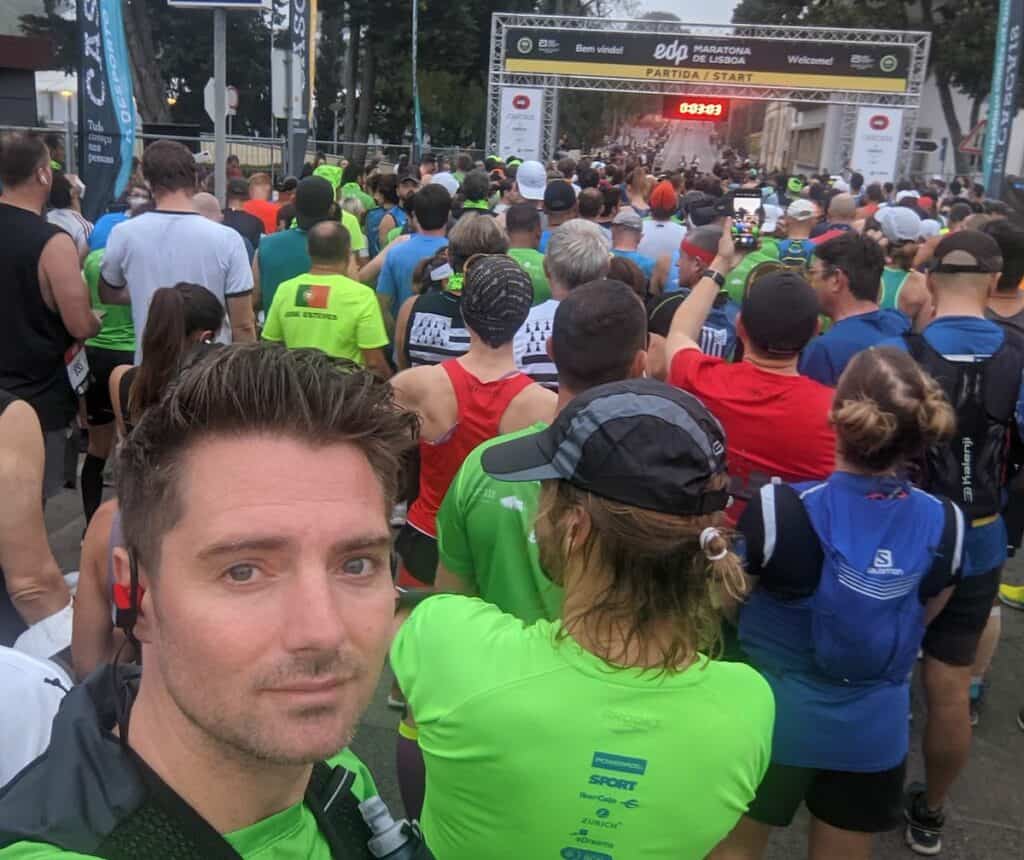
Join a race that scares you or motivates you or has a sense of adventure to it, like an easy ultra in an amazing setting or your first marathon abroad. Examples, include the Castle Race Series (triathlons in iconic castles), Tough Mudder (mud runs and obstacle course), and It’s Grim Up North (ground-up destination race).
Or you could enter an old fashioned marathon or half-marathon. They are a great way to challenge yourself, focus, and push your limits. Training for a marathon requires dedication, discipline, and a well-planned training program. You’ll get a real buzz as you increase your mileage and learn more about your body by incorporating speed work and strength training into your routine.
💌 Inspiring Run Stories.. in Your Inbox
Join Strava – New Route Inspiration and Feedback
Join Strava so you can see other people’s runs and discover new routes in your area.
With millions of athletes all over the world, Strava’s is the world’s biggest database of road and trail running routes. If it’s been run before, it’ll be on Strava.

The self-proclaimed “social network for athletes” is wonderfully gamified too, with lots of in-built kudos. I personally find the process of cheering people on and being cheered yourself to be a great motivator.
Plus, Strava collects a ton of data points, turning your phone into a sophisticated running coach. You can join challenges, track your progress, and deep dive into stats, such as average pace, elevation gain, heart rate, time splits, and any PBs picked up along the way.
Fun Runs – Dress Up and Let Loose
Fun runs are a great way to enjoy running with friends or family without the pressure of competition. These events are typically shorter distances, ranging from one to three miles. Participants often dress up in costumes and/or encounter obstacles such as inflatables or paint. Fun runs are perfect for beginners or those who are looking for a more relaxed atmosphere.
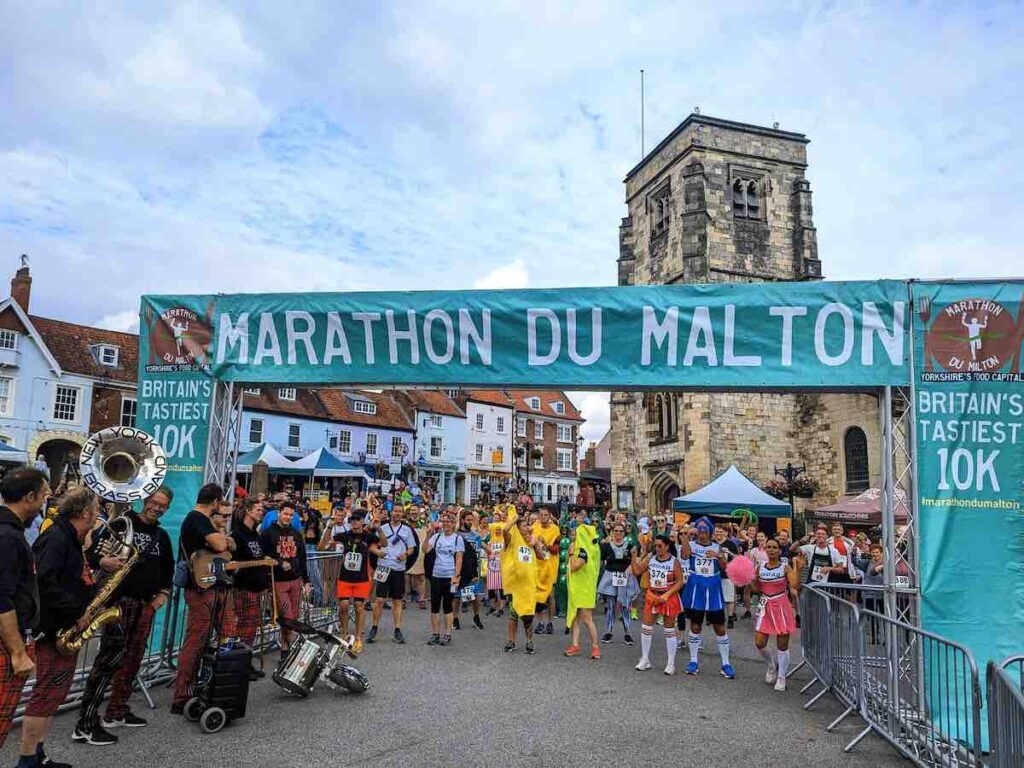
Check out my review of Marathon Du Malton, the UK’s tastiest fun run with food and booze stops!
Triathlons – Push Yourself on Three Fronts
Why is running so hard? Because you’ve become over-reliant on a single form of exercise.
Triathlons are a combination of swimming, biking, and running. These events can vary in distance, with the most common being the sprint distance, which consists of a 750-meter swim, a 20-kilometer bike ride, and a 5-kilometer run. Triathlons are a great way to challenge yourself and test your endurance. Some popular triathlons include Ironmans and the Escape from Alcatraz.
Overall, running events are a great way to stay motivated and challenge yourself. Whether you’re a beginner or an experienced runner, there’s an event out there for you.
Parkrun – A Great Way to Start the Weekend
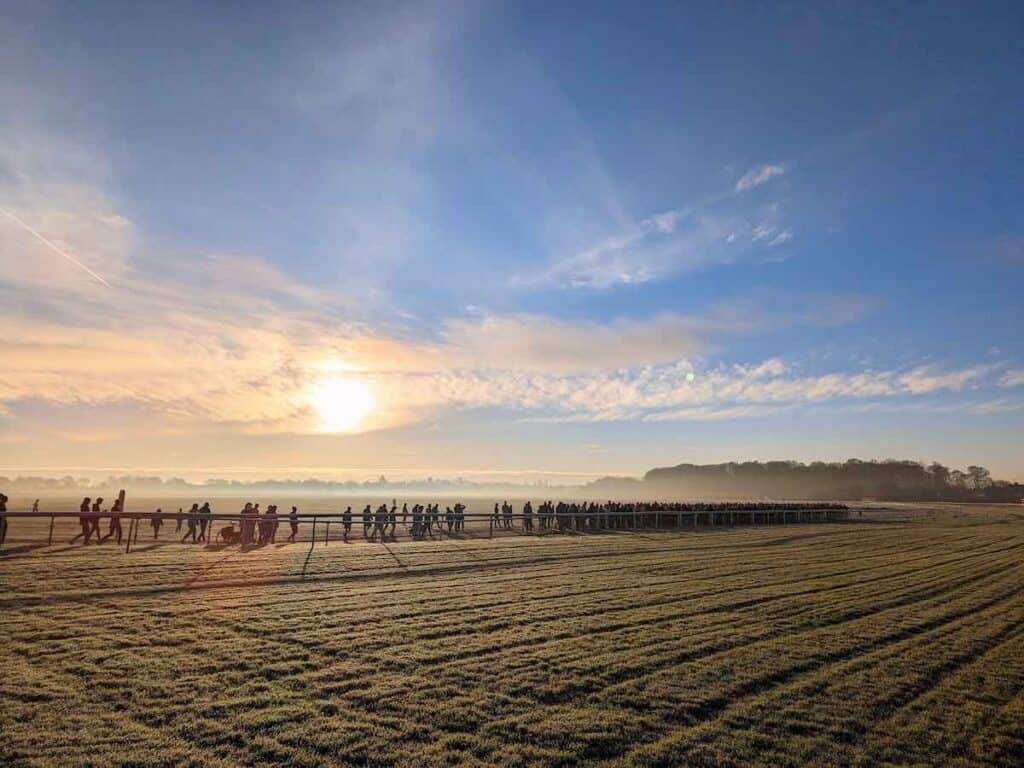
Truth be told, I was skeptical at first. Running the same loop with hundreds of strangers every week.
However, there’s something really special about parkrun. Maybe it’s the community spirit. The warm welcome. The variation in courses (historic landmarks, woodlands, parks, beaches, you name it). The familiar routine. The conversational pace. Not to mention, being free to enter!
Run to Get Somewhere – to Commute or Tick Off Your To-do List
Multitasking can take place when someone tries to perform two tasks simultaneously, switching from one task to another, or perform two or more tasks in rapid succession.
Now, apply that to running and you have a winning formula for successfully navigating a busy life. It also makes running fun, giving it an extra edge.
You could run to work. Run to the supermarket. Run to meet friends. Deliver birthday cards. The list is endless.
Doing Good on Your Run – Litter Collection or Volunteering
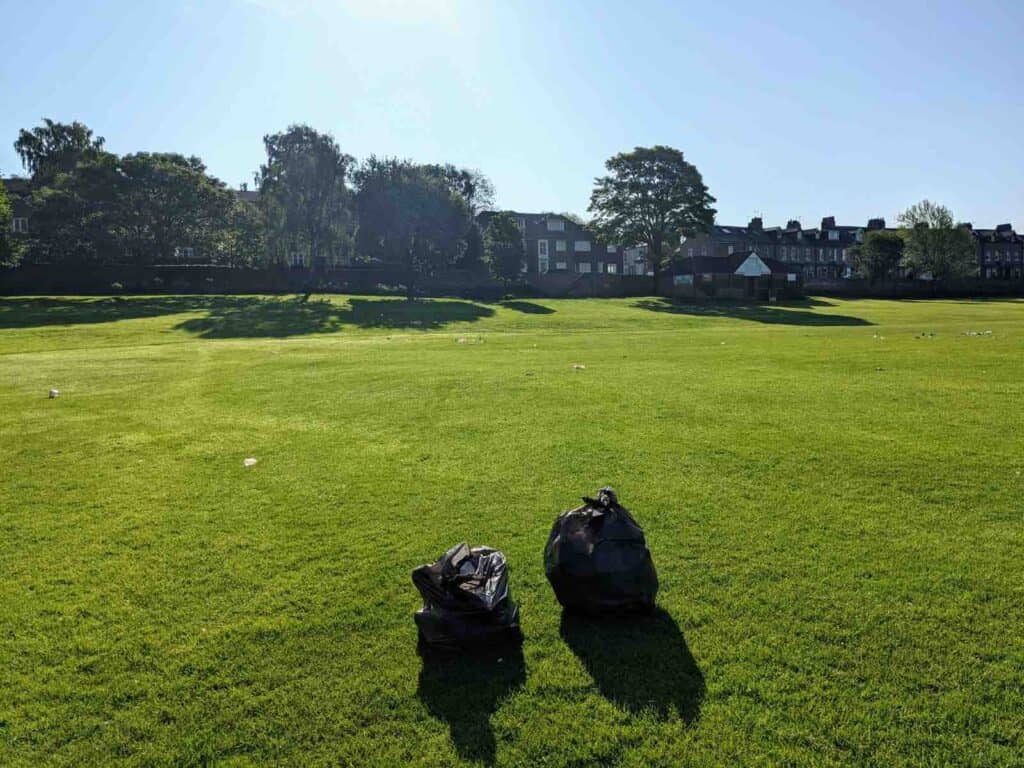
There’s a growing community of people who are getting fit while doing good.
I joined the movement about 5 years ago and am now a self-confessed “Plogger”, the name for someone who “plogs” or goes “plogging”. That is, combining jogs with collecting trash or litter.
Swedish marathoner Erik Ahlström coined the term “plogging” and started the trend in 2016, looking to combine his love of running with a way to help the planet. He began picking up other people’s litter in Stockholm to get our of a running rut, and others soon followed suit.
The now-global movement gained popularity via social media and organized plogging events, including on Earth Day and World Cleanup Day. Some 2,000,000 people are estimated to plog daily. It’s even been made an official word in the Oxford English Dictionary.
Vary Your Running Training For More Fun
Interval Sessions
Interval sessions are a great way to improve your running speed and endurance. These workouts involve alternating periods of high-intensity running with periods of rest or low-intensity running.
One popular interval workout is the “Tabata” protocol, which involves 20 seconds of all-out effort followed by 10 seconds of rest, repeated for a total of 8 rounds. Another effective interval workout is the “Fartlek” training, which involves alternating periods of running faster with periods of low-intensity strides.
Distance Running
Distance running is a great way to build endurance and improve your overall fitness level. To get the most out of your distance runs or marathon training, it’s important to gradually increase your mileage over time.
One effective way to do this is to follow the “10% rule,” which involves increasing your weekly mileage by no more than 10% each week. This will help prevent injury and ensure that you are able to continue to make progress over time.
Speed Training
Speed training involves working on your running mechanics and technique in order to improve your running speed and efficiency. This can include drills such as high knees, butt kicks, and skipping.
Another effective speed training technique is hill repeats, which involve running up and down a steep hill at a high intensity. This can help improve your leg strength and power, as well as your overall running speed.
Overall, incorporating a variety of different workouts into your running routine can help you improve your endurance, speed, and overall fitness level. By gradually increasing your mileage, incorporating interval sessions and speed training, and focusing on proper running mechanics, you can become a stronger and more efficient runner over time.
Ad Hoc Runs
There’s tiny windows when motivation strikes in every day. Have your running gear ready for a spur-of-the-moment runs. So, instead of fighting against your feelings, you’re simply ready to strike when the opportune moment strikes.
Switch between Active Recovery Exercises
Breaking up your runs with other types of physical fun can have huge benefits.
In addition to the mental lift, active recovery exercises can speed up recovery from intense exercise sessions or longer distances when tired muscles can experience delayed onset muscle soreness (or DOMS). This stiffness will otherwise often prove debilitating for a few days post-training. All it takes is a gentle jog at 30-60% of your maximum heart rate to loosen up and flush toxins from the body.
Examples of active recovery activities include walking, swimming, cycling, yoga or light cross train sessions.
Why Fly Solo? It’s Sometimes More Fun in Group Runs
Joining a running group or signing up to a running charity can be a great way to make running more fun and social. There are many benefits to running with others, including motivation, accountability, and the opportunity to meet new people who share your passion for running.
I have personally found that joining a running group has helped me stay motivated and on track with my running goals. It’s much easier to get out in the rain when you know there will be others waiting for you. Plus, it’s good to bounce questions off of others in the running club – be it about a recurring running problem, running form, or to assess your fitness levels.
There are many different types of running groups and communities out there, so it’s important to find one that fits your needs and preferences. Some groups are focused on training for races, while others are more social and casual. Some groups meet early in the morning, while others meet in the evenings or on weekends.
Running with Music and Podcasts
I find solo runs a great opportunity to play my favorite Spotify playlists or immerse myself in an audiobook. Both keep me entertained and motivated, and I enjoy the company on longer distance runs. If you’re more interested in podcasts, there are plenty of options out there as well. From true crime to comedy, there’s a podcast for every interest. I find that listening to podcasts can be a great way to pass the time during long runs. Just be sure to choose a podcast that won’t distfract you too much from your surroundings.
There’s also times when I need to run without music. In total silence.
Many runners find that ditching the tunes leads them to a newfound appreciation for exercise. Without music, you can fully absorb the beauty of nature, engage with fellow runners, and embrace the rhythm of your own body.
In short, if you running without music, try without. And vice versa. The change can help you embrace the present moment, tune into your technique, brainstorm on the go, and rediscover your motivation.
Adding More Structure to Your Running Training – Running Coaches & Training Plans
Hire a Running Coach or Personal Trainer
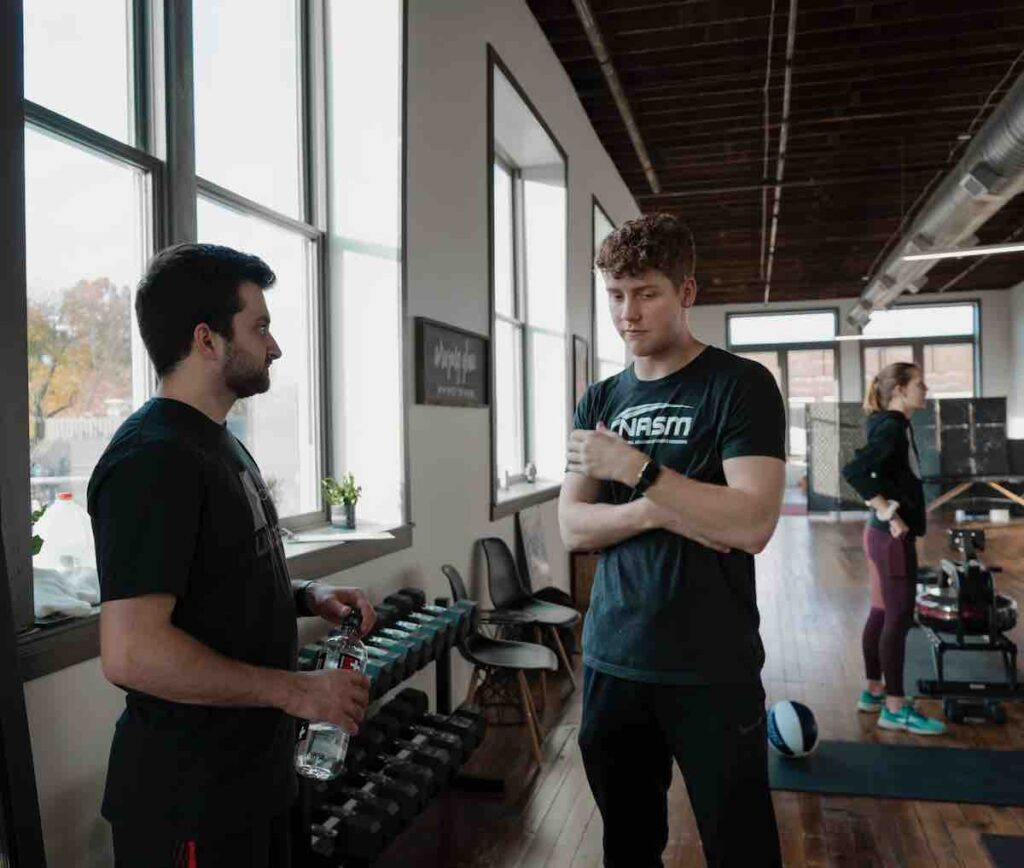
For many people, hiring a running coach might seem out of reach. An expensive luxury for something that’s as simple as putting one foot in front of the other. Thanks to online running coaching apps expert advice has never been more accessible and affordable.
Hiring a good running coach will also do more than improve your running. Your tailored training schedule will come with guidance and coaching on how to eat healthier, recover faster, prepare for race day, achieve personal records, and improve your overall conditioning.
Read on: How much is a running coach?
Develop Your Own Run Training Plan
As an avid but free range runner, I have found that following a structured training plan helps to level up my times. A well-designed plan should include a mix of different types of runs, such as speed workouts, tempo runs, and long runs. It’s important to gradually increase the intensity and volume of your training to avoid injury and burnout.
When creating a training plan, I also like to set specific goals for each week and track my progress using an old fashioned paper and pen running log. This helps me stay accountable and motivated, and adjust my training if I’m not making the progress needed before a marathon or a big challenge run, such as the Hadrian’s Wall ultra.
Setting Goals and Visualizing Success
Setting goals is a key component of any successful training plan. I like to set both short-term and long-term goals to keep myself focused and invested. Short-term goals can be as simple as running a certain distance or time, while long-term goals might include achieving a personal record in a race.
When setting goals, remember to make them specific, measurable, and achievable. I also find it helpful to set deadlines for achieving my goals, as this gives me a sense of urgency and helps me stay on track. Don’t forget to celebrate the small wins along the way!
Consistency Like a Stoic Athlete
Consistency is one of the most important factors in improving your running performance.
Whatever you’re trying to accomplish, you could do worse than learn from Stoicism. Stoic athletes are experts in habit forming, which is about putting the reps in and seeing a task through.
In addition to regular training, it’s important to take care of your body by getting enough rest, eating a healthy diet, and staying hydrated. These factors can have a big impact on your performance and overall health.
Better Understand Your Daily Rhythm
Keep a running journal and log the unique set of circumstances that contribute to your best runs, such as the time of the day, weather, what you listen to, or the added bonus of a reward. Learn and repeat.
It also pays to understand your daily rhythm and where a long run might fit in. For example, all of us experience the day in three stages a peak, a trough, and a rebound. And about three-quarters of us experience it in that order.
Running fun can often be found when you go with the flow.
In conclusion: There’s Many Routes to Running Fun
If your motivation for running disappears, fear not. Help is on hand.
It could be in the shape of running clubs, different songs, a new pair of running shoes, conquering a long hill, alternating with another sport, a bespoke training plan, or simply new routes.
Take that first step and I promise you’ll never regret it.
The release of dopamine and serotonin will back me up. These feel-good chemicals flood your brain and body, creating the famous runner’s high that leaves you feeling energized and happy. It’s a great way to boost your mood and start your day off on the right foot.
As you run more frequently, your brain associates this physiological response with the activity, increasing your desire to run more often. So, get out there and reap rediscover why running is fun.

